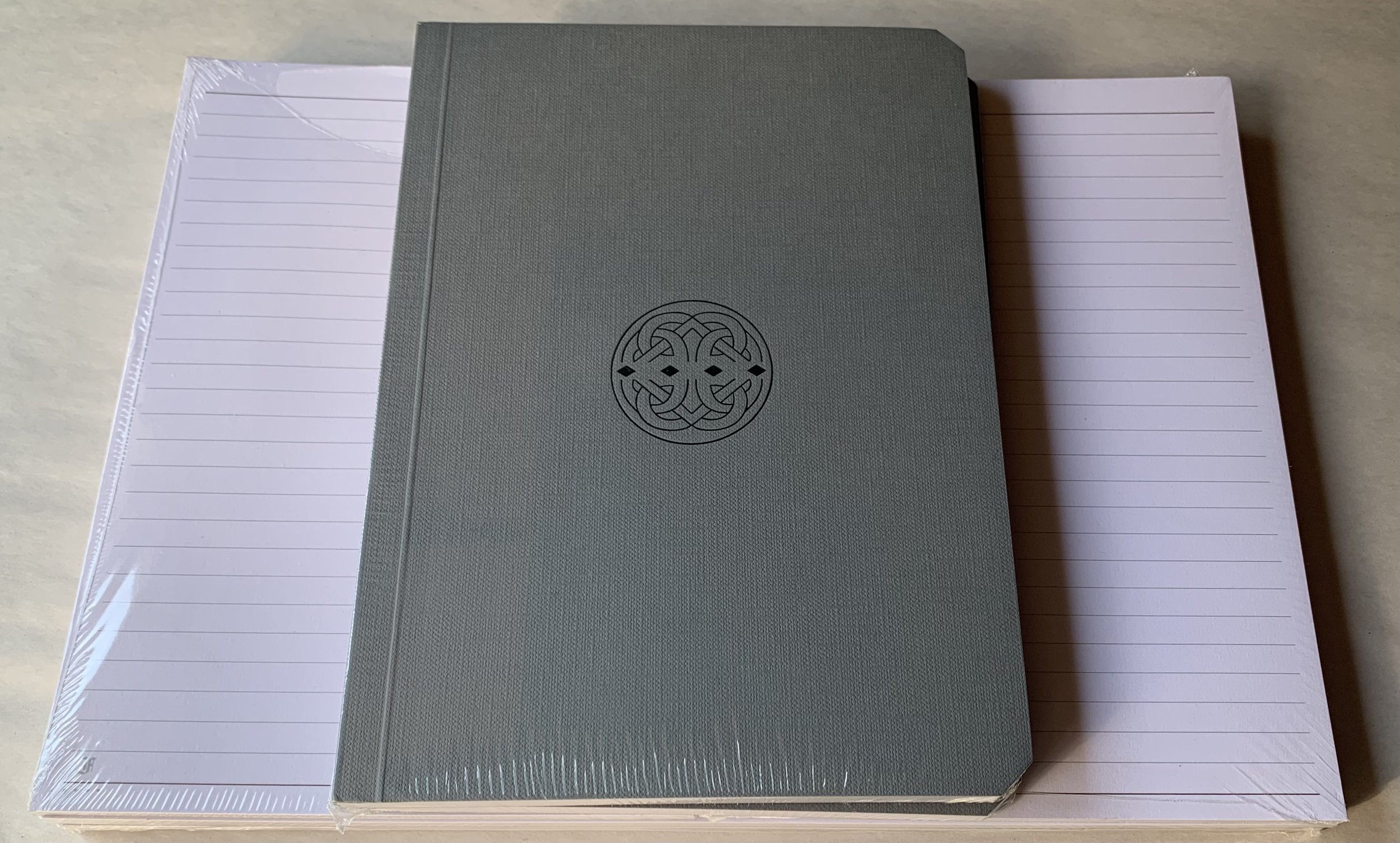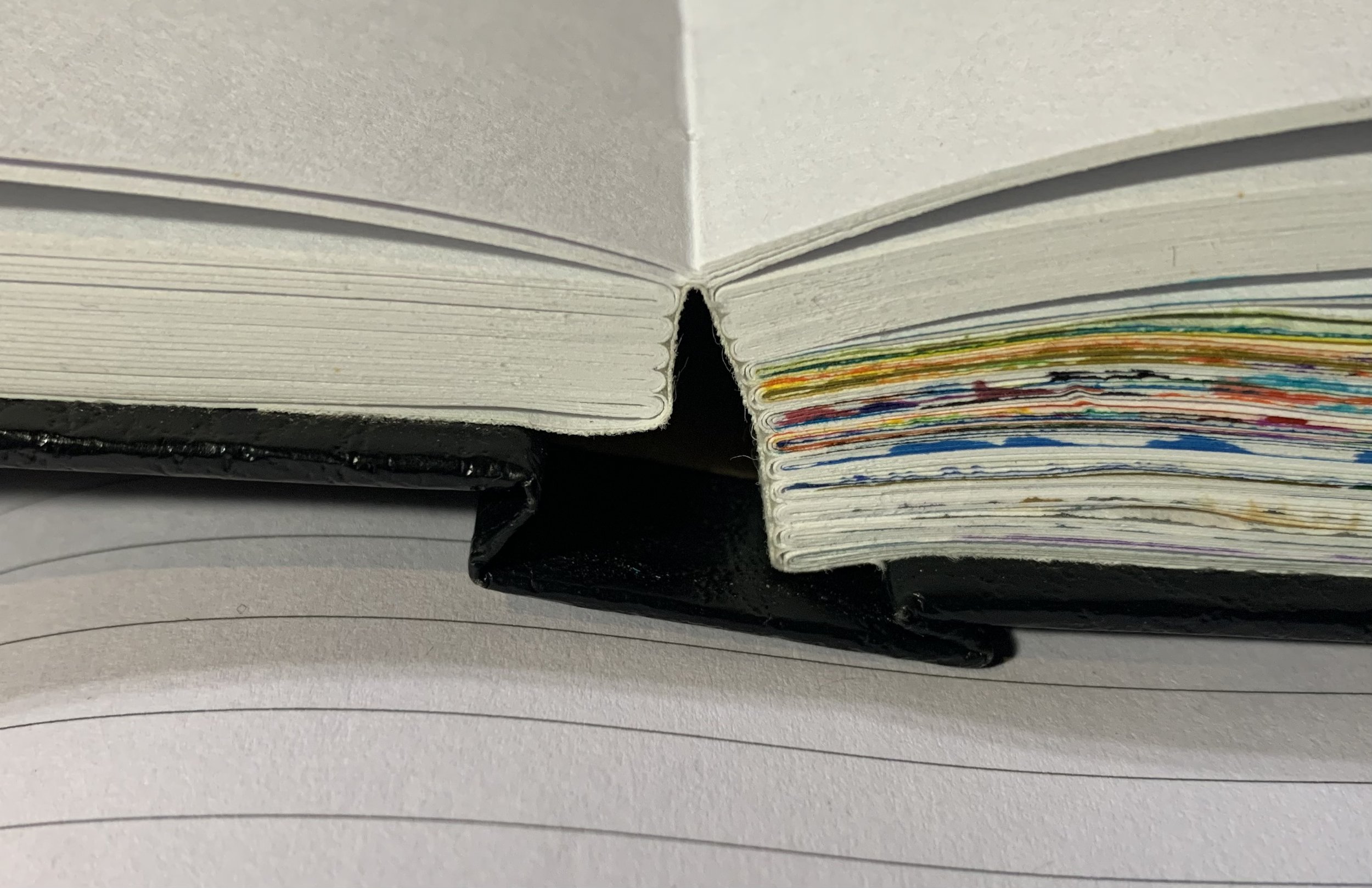Franklin-Christoph Sugar Paper
Someone recently recommended Franklin-Christoph to me, indicating they made their products in the US and had unveiled a new line of fountain pen paper made from sugar cane fibre, something I’ve been increasingly aware is a great fountain pen medium. This has been sold under other brands, along with papers made from bamboo, straw fibre and corn husk fibre, all of which boast much better fountain pen qualities than typical wood fibre paper, possibly because they’re annual “green” fibres - types of grasses rather than wood from perennial trees.
When viewing the Franklin-Christoph site, however, they are very non-specific about where they source their paper, and though the main page calls it “Sugar Paper,” their FAQ more generally indicates it is bamboo or sugar cane. But I was impressed with the stats and descriptions of the paper on offer, so decided to get a few packs of the various form factors I regularly use. The paper was pricey, but appeared high quality, and being marketed by a fountain pen merchant, I felt it might be worth a price tag on par with fine Japanese papers I’ve bought before.
I ordered two packs of blank A4, most useful to me for printing stationery patterns or using in the fabrication of my notebooks; two packs of lined A5, my preferred letter-writing format; and two of their A5 notebooks.
The notebooks were the biggest disappointment, as I purchased them despite a conflict with my preferred binding format. Typically I prefer thinner saddle-stitched notebooks that will reliably lay flat and when necessary facilitate folding over to write without a table. These notebooks lacked these features, but I felt might be justified in their price (CAD $11) as they were advertised as “lay flat.”.
Typically books that are lay-flat should have a spine that stays detached from the binding, allowing the internal bound edges to fully open no matter what part of the book is in use. I’ve posted a photo above of one of my Heinz-Jordan sketchbooks (made in Canada) for comparison, as they lay perfectly flat throughout. The Franklin-Christoph books, unfortunately, did not at all lay flat. They were perfect-bound with a fully glued spine, and any attempt to break the spine for flat writing would likely destroy the binding before the book is fully used. When the spine is glued to the bindings, the bound edge of all parts of the book stick firmly together, bringing the whole page with it.
The paper was the same across all three formats. I decided to compare the blank A4 paper with my most-used A4 paper, Clairefontaine Clairalfa. The Clairalfa is from a non-specified fibre type but with a detailed EU factsheet that gives significantly more information than the Franklin-Christoph site. At about CAD $170 for a box of 2500 sheets delivered by Amazon.fr, that works out to about CAD $.07 per sheet. The Franklin-Christophe paper runs CAD $11 for a pack of 50 sheets, and about CAD $37 for delivery on orders under USD $100. That means a high of CAD $.96 per sheet for just one pack of 50 delivered, or CAD $.22 for 2500 sheets (50 packs) delivered with free shipping. So at a minimum of 3x the cost, the paper should be quite different.
My tests, however, showed them as nothing special. Whilst the paper resisted bleed-through about as good as the Clairalfa, it was a bit softer, especially with extra-fine nibs, and thus left strong impressions. It also had quite a bit of show-through with the dark colours, again especially from the extra-fine nibs. The Clairalfa is a much brighter white, as well, which I prefer, but which is a subjective thing not all buyers will focus on.
Not apples to apples? Is it the sugar cane and bamboo source that makes it pricier? Unfortunately on this count as well there are better prices out there. Canada’s own London Drugs sells the brand Sugar Sheet, which I’ve used along with a couple other fellow Canadian fountain pen users, and this paper ships free within Canada for CAD $85 for a box of 5000, or less than CAD $.02 per sheet - less even than the Clairalfa. I find the performance and brightness of the Sugar Sheet similar to the Franklin-Christoph, except for the size (US letter in the case of the Sugar Sheet), so I would recommend many different papers and notebooks before I would Franklin-Christoph.






